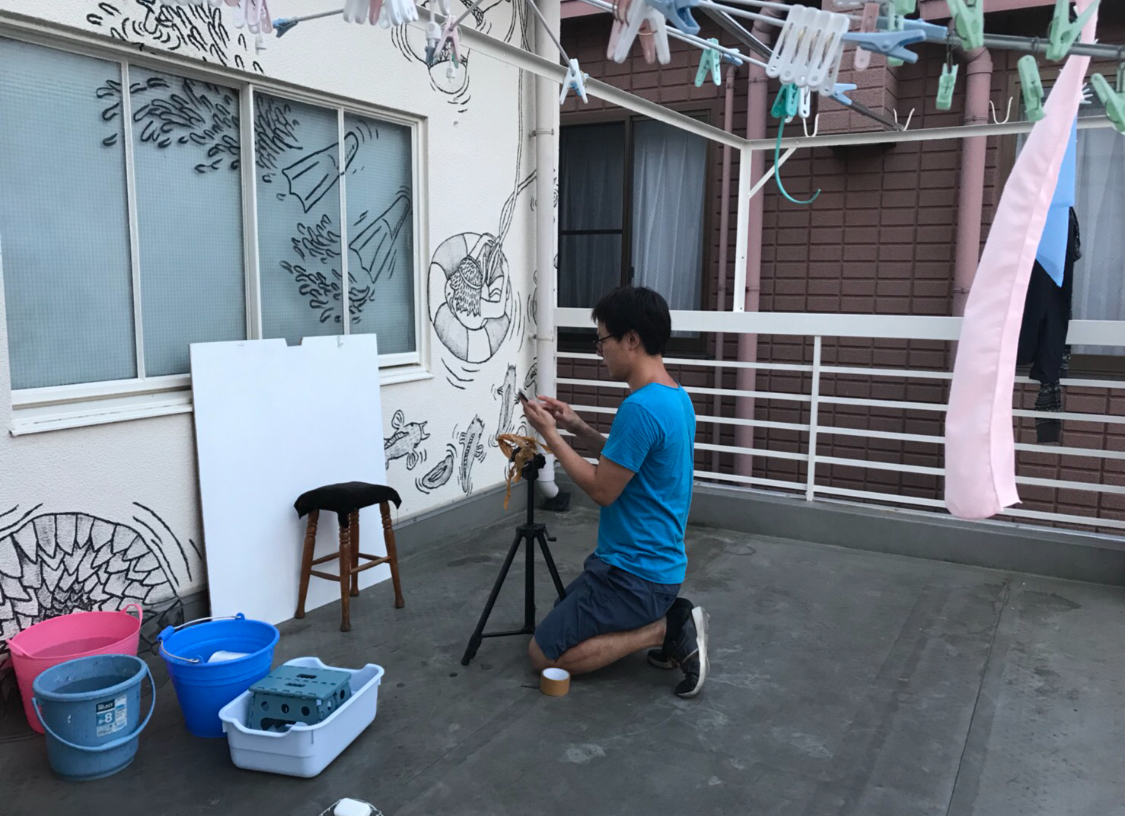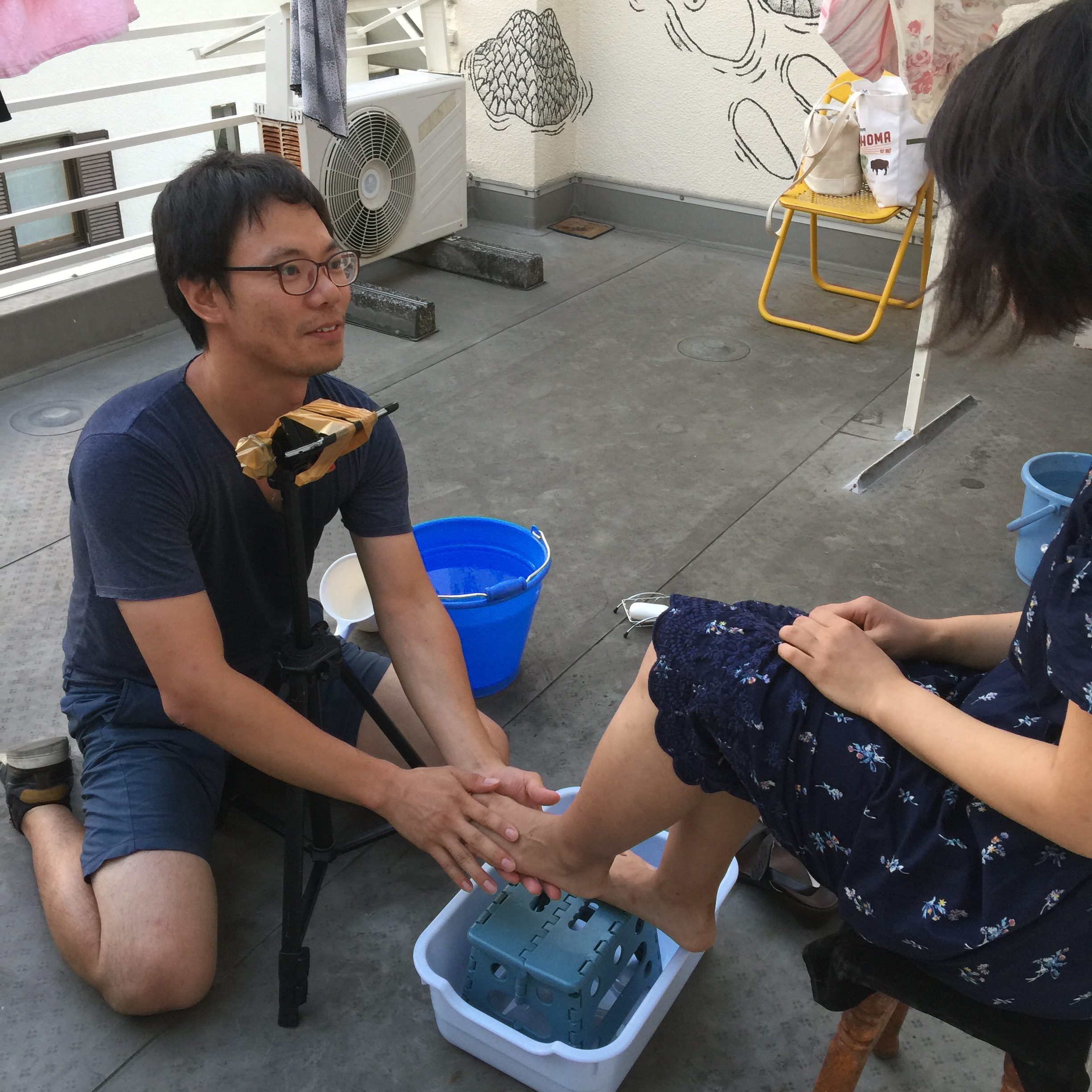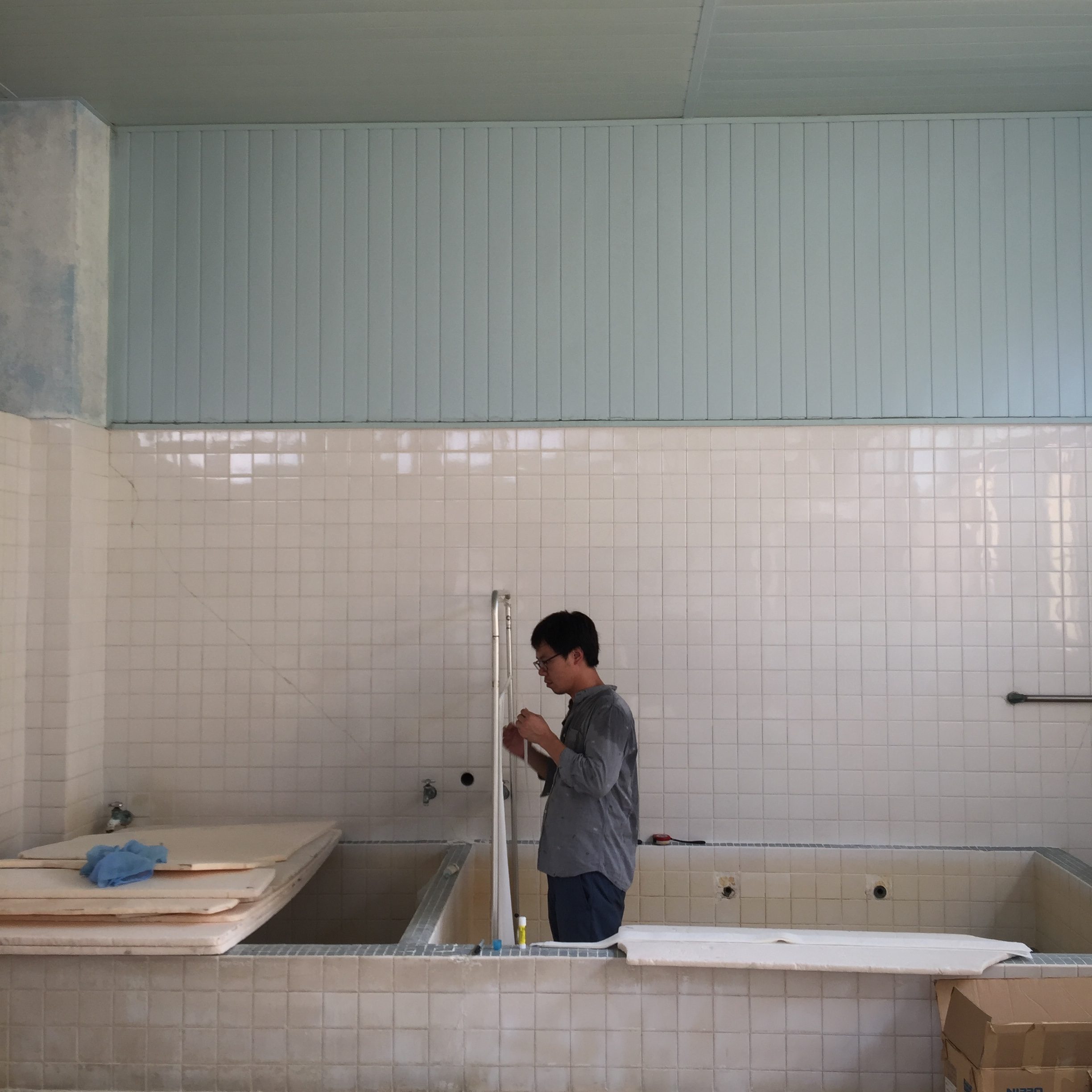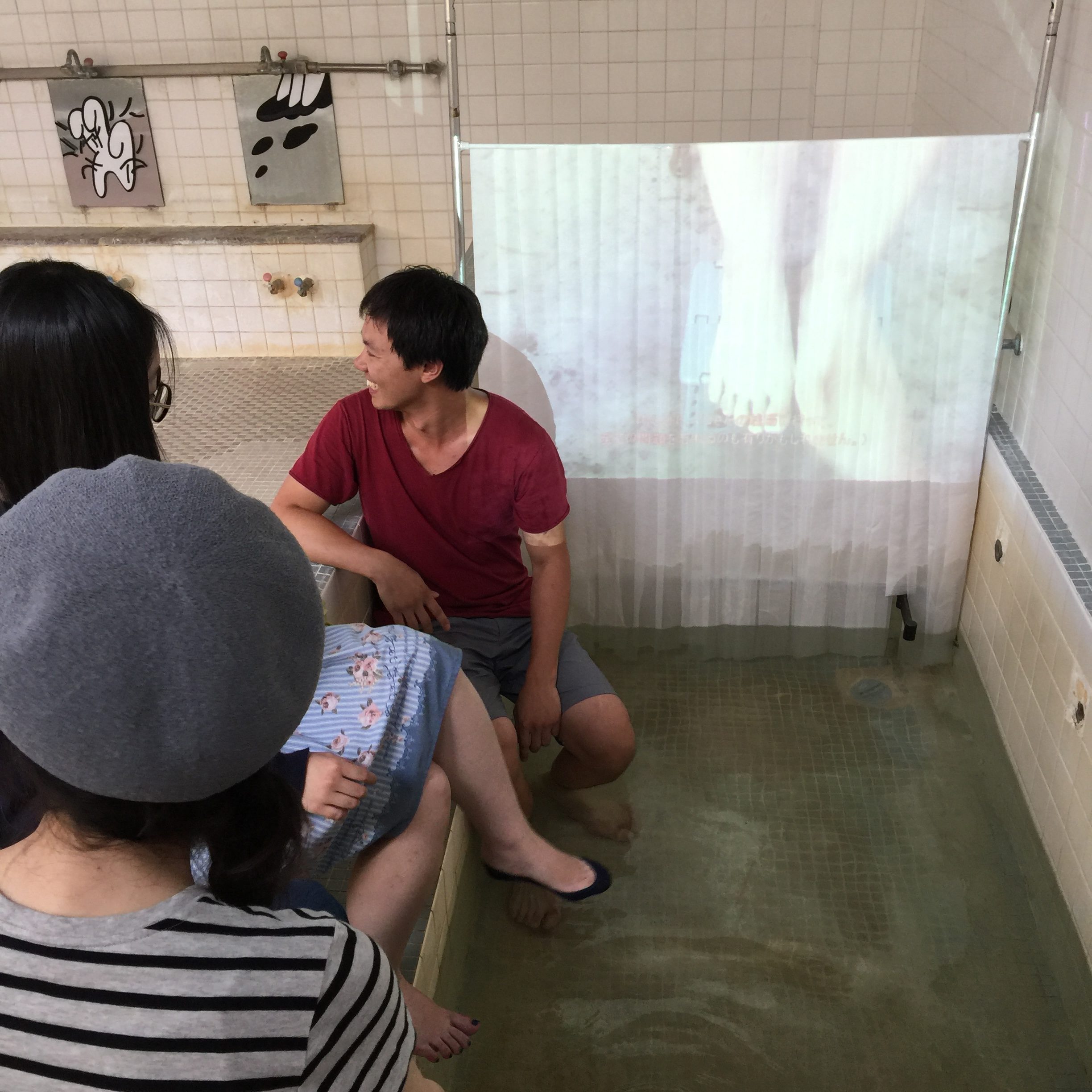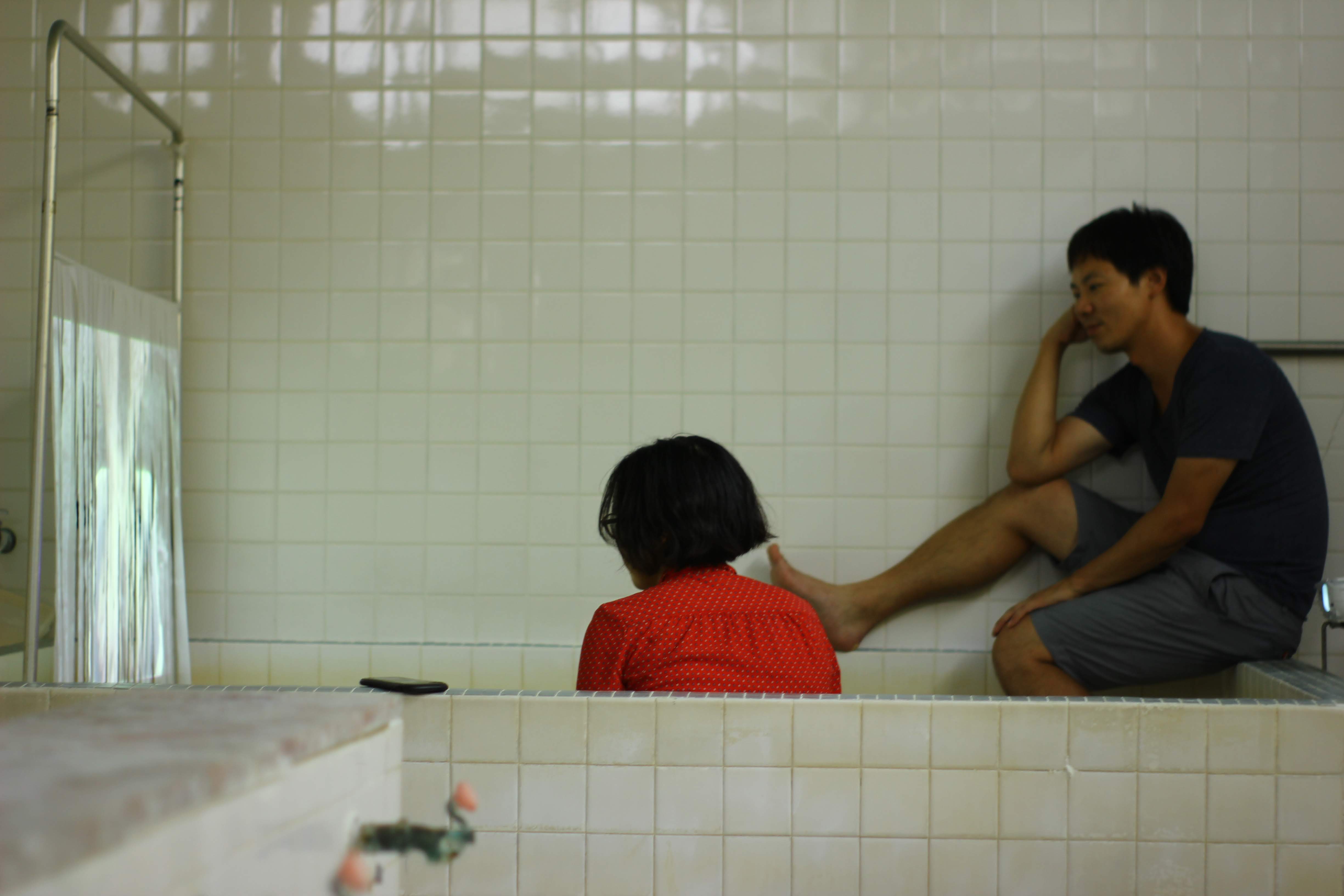Ji Yong Kim
South Korea, NY
drawing, painting, video, mixed media
residency July -August2018
/
ジヨング・キム
韓国
ドローイング、絵画、ビデオ、複合素材
2018年7~8月滞在
/
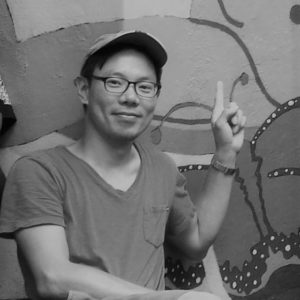
My works in recent years had seen drastic changes both in concepts and visual languages. I found myself increasingly drawn to and inspired by traditional Buddhist art. In the hindsight, this was not a surprise considering my past adolescent years spent living in Myanmar, a Buddhist country located in Southeast Asia. I began to utilize shapes, colors, and symmetry found in Buddhist art and incorporated them into my artworks, while reading the history and influences of Buddhism in South Asia and beyond.
I am interested in an intersection of traditional images/structures of Buddhist art and images/ icons from contemporary popular culture. Recently, I am fascinated by how these two seemingly opposite spiritual and cultural forms adopt, merge, and blend into one another. Use of symmetrical designs and patterns, Mandala-esque structure, and gateway or entranceways found in my drawings and paintings often evoke images used for spiritual contemplation. Yet within this other world, it is occupied with various images pulled from popular cultures, ranging from advertisement, comics and anime, to virtual world and cyber-space. The use of picture plan as an entrance to another world is an ongoing obsession for me. The multiple levels of diagrams, structures, and gateways can signify hierarchical spiritual realms, layers of consciousness, or even sublevels of physical human anatomy.
ここ数年の私の作品には、コンセプトと視覚的言語の両方において大きな変化が見て取れます。自分自身が伝統的な仏教美術に惹きつけられ、刺激を受けていることに気づいたのです。これは青春時代を東南アジアにある仏教国ミャンマーで過ごしたことを考えれば今となっては不思議なことではありません。
南アジアから世界に広がっていった仏教の歴史や影響を学んでいく中で、仏教美術の中に見出した形や色、シンメトリーを利用して作品の中に取り込み始めました。仏教美術の伝統的なイメージ/構造と現代のポップカルチャーのイメージ/アイコンに共通する部分について関心があり、最近ではこれらの一見スピリチュアル的にも文化的にも反対の二者がどのように溶け合っていくのかに魅了されています。
私の作品の中に登場するシンメトリーなデザインや文様らマンダラ風の構図、門や通路といったモチーフの使用はスピリチュアルな瞑想のイメージを呼び起こすものです。しかしその一方で、広告、漫画、アニメからバーチャルワールドやサイバー空間に至るポップカルチャーから飛び出してきた様々なイメージに占められている別の世界があります。出入り口の構想は妄想の段階ですが、複数の図形や構造、門は階層的でスピリチュアルな領域、または均一な身体的構造の意味を持つかもしれません。translation: Mina Ino
/

Ashiyu Monogatari (Healing Bath: Sketches)
Bathhouse encourages a strange intimacy. Young and old, varying body sizes, muscular or thin, bald or hairy, rich or poor distinctions all disappear. One discovers remarkably same biological traits, then a shared comfort in commonality. Thus, bathhouse easily fosters conversations. A statement on weather can turn into a discussion about work, personal background, politics, philosophy, etc.
Washing guests’ feet recreates such condition of physical intimacy found in a bathhouse. Beyond that, it is highly open-ended gesture that can signify humility, humbleness, a symbolic cleansing act, or a religious ritual. Each guest was then encouraged to recall and share personal experience related to bath and bathhouses, and a collected story is presented as a whole. The installation in a retired bathhouse recalls its past history, absence of bathers, ephemeral human experiences and interactions. It may be that bathhouses as a forum for communication are being replaced by virtual spaces and sites. But the physical intimacy and its ability to initiate a human connection remain in various forms in different places, as in barber shop, massage parlor, and in dancing. Hopefully through listening to these collected stories, a quality so common and central yet profoundly human shared in all of us may be discovered.
銭湯は妙な親密さを生み出す。若者から年寄り、大きさもそれぞれ違う体、筋肉質に瘦せ型、髪の薄い人や髪の多い人、金持ちやお金がない人の違いさえも、すべて消してしまう。ある人は、驚くべき生物学的な特性、共同体における共有する心地よさについて言及している。ゆえに銭湯では会話が生まれやすい。天気についてのない気ないやりとりから、仕事、プライベート、政治、哲学にまで発展してゆく。
ゲストの足を洗ということは、銭湯で見られるそのような親密さを再現する。それ以上に、それは人間らしく、謙遜な態度で、浄化のシンボル、また宗教的な儀式などを広く表現する行為である。それぞれゲストには、銭湯やお風呂にまつわる経験を回想し、話してもらう。そして集められた物語は一つのものとして発表される。営業を終了した銭湯でのインスタレーションは、銭湯の歴史、入浴する人はもういないこと、そして束の間の、人々の経験や関わりを静かに語っている。
Translation: Nagisa Mitsumori
